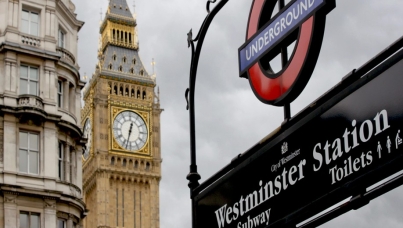Ipsos Top Cities 2017
Ipsos Top Cities 2017: New York remains the best city for work, rest and play
EU publics see London as the top city in Europe
The 2017 edition of the Ipsos Top Cities Index finds that New York is the most popular city worldwide, retaining the title it claimed when the survey was first run in 2013.
This year sees Abu Dhabi leapfrogging London and Paris into second position, with Tokyo, Sydney and Zurich on the same score in equal fifth.
People in 26 countries worldwide were asked which, from a list of 60 global cities, they felt were best to live in, do business in, and visit. The scores from the three questions were then added together to create the Ipsos Cities Index.
The cities in the global top five have unique strengths; New York and Abu Dhabi are unparalleled as centres for business but they score less strongly as a place to live or visit, whilst Paris tops the global list of tourism destinations but rates comparatively poorly as a business hub, failing to reach the top 10 on this measure. London and Tokyo have rounded profiles, scoring more evenly across the three dimensions, while Zurich and Sydney’s strength is derived from their high scores as top cities to live in.
The remaining top ten positions this year are occupied by Rome, Los Angeles and Amsterdam. The cities at the bottom of this year’s ranking are Nairobi and Tehran.
| Ipsos Top Cities | |||
| Top Cities Index 2017 Scores | |||
| City | Index Score | 2017 Index Rank | 2013 Index Rank |
| New York | 50 | 1 (-) | 1 |
| Abu Dhabi | 46 | 2 (↑) | 4 |
| London | 41 | 3 (↓) | 2 |
| Paris | 39 | 4 (↓) | 3 |
| Sydney | 36 | =5 (-) | 5 |
| Zurich | 36 | =5 (↑) | 6 |
| Tokyo | 36 | =5 (↑) | 7 |
| Rome | 34 | 8 (↑) | 9 |
| Los Angeles | 28 | 9 (↑) | 10 |
| Amsterdam | 27 | 10 (↑) | 14 |
- New York retains its place as the leading city in this year’s index.
- Since 2013, Abu Dhabi has overtaken London and Paris to move into second.
- Tokyo has risen two places, and is joint-fifth with Sydney and Zurich in the city index.
- Only one city has broken into the top ten since 2013 – Amsterdam.
- The bottom cities in the Index this year are Nairobi and Tehran (both 1).
Looking at each of the three dimensions, different cities come out on top:
- New York is the most popular city to do business in, with 23% of the global sample selecting it from the list. Abu Dhabi is second with 21%, followed by London and Hong Kong (both on 16%) and Tokyo (15%).
- Paris is seen as the best city to visit; 21% say it is one of the best destinations for tourism. Rome comes second on this measure on 20%, overtaking New York which scored 16% this year.
- Zurich is the top destination to live in. Selected by 18% of our sample it is narrowly ahead of Sydney – the city that also came second on this measure in 2013 – on 17%. Abu Dhabi has moved from seventh to third on this measure over the same period.
The EU view
New York also tops the list of favourite cities for citizens of the nine EU countries in the sample – Belgium, France, Germany, Great Britain, Hungary, Italy, Poland, Spain and Sweden. Focusing only on the 18 EU and EFTA cities in the list, it appears that any concerns about the negative impact of Brexit on London’s image are yet to materialise. London retains its crown as the leading city in this region, with a strong lead over Paris and Zurich.

Generation strains
Different generations have different views of what makes a top city. Zurich is the favourite city for Baby Boomers (those born 1945-65), whilst the three younger generations – Generation X, Millennials and Generation Z – are consistent in placing New York and Abu Dhabi as their top two.
Sydney appears to have more limited appeal to younger people. Whilst it is the second-favourite city for Baby Boomers and third-favourite for Generation X, Millennials (aged 22-37) rank it as their ninth-favourite, whilst Generation Z (aged 21 and under) put it tenth. Other cities that have greater youth appeal include Los Angeles, Tokyo and Berlin.

Simon Atkinson, Chief Knowledge Officer at Ipsos, said:
Again we see the power of the New York brand with its appeal to people across the world, young and old. In the wake of Brexit, London will be pleased to remain Europe’s pre-eminent city, ahead of its arch-rival Paris. But the rise of Abu Dhabi and the weakness of Sydney among younger people remind us that no city can afford to rest on its laurels.
Technical Note
- Interviews were conducted using the Ipsos Online Panel system, among 18,557 online adults aged 16-64 in 26 countries (Argentina, Australia, Belgium, Brazil, Canada, China, France, Britain, Germany, Hungary, India, Italy, Japan, Mexico, New Zealand, Peru, Poland, Russia, Saudi Arabia, Serbia, South Africa, South Korea, Spain, Sweden, Turkey and the United States).
- Fieldwork was conducted between 21 April and 5 May 2017. Data is weighted to match the profile of each population.
- An increase in the number of cities in the list from 48 to 60 between 2013 and 2017 means that the Top Cities Index scores are not directly comparable between the two surveys. Instead, comparisons are made by rank.
- The new cities for this wave of the survey are Belgrade, Bogota, Delhi, Dublin, Lagos, Lima, Manila, Munich, Nairobi, Prague, Vancouver and Vienna.
- Participants were asked “Based on what you have seen yourself, or heard about from others, which three cities in the world do you think are the best to… Live in? Visit? and Do business in?” The same list of sixty cities was provided for each question
- In countries where internet penetration is approximately 60% or higher the data output generally reflects the overall population. Of the 26 countries surveyed online, 16 yield results that are balanced to reflect the general population: Argentina, Australia, Belgium, Canada, France, Germany, Great Britain, Hungary, Italy, Japan, New Zealand, Poland, South Korea, Spain, Sweden, and United States. The 10 remaining countries surveyed – Brazil, China, India, Mexico, South Africa, Saudi Arabia, Serbia, Peru, Russia and Turkey - have lower levels of internet connectivity and reflect online populations that tend to be more urban and have higher education/income than the general population.



